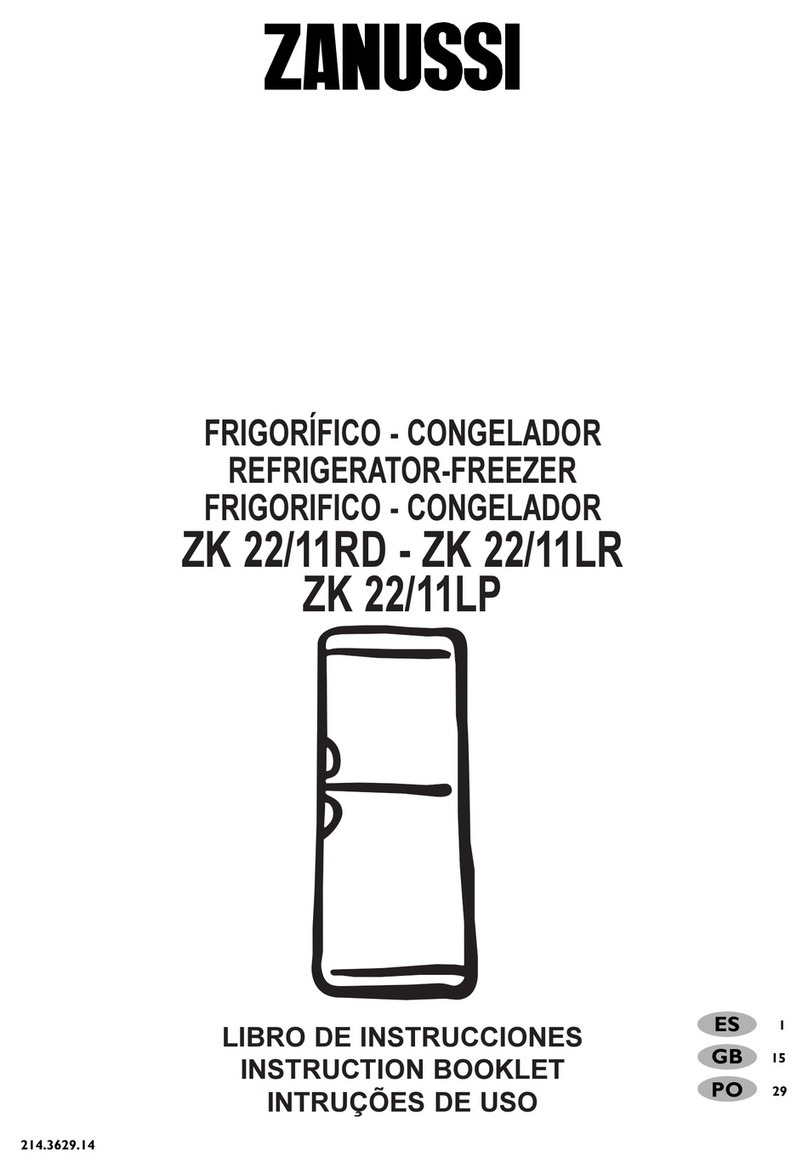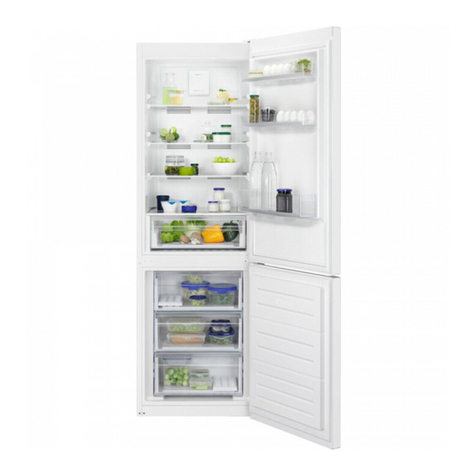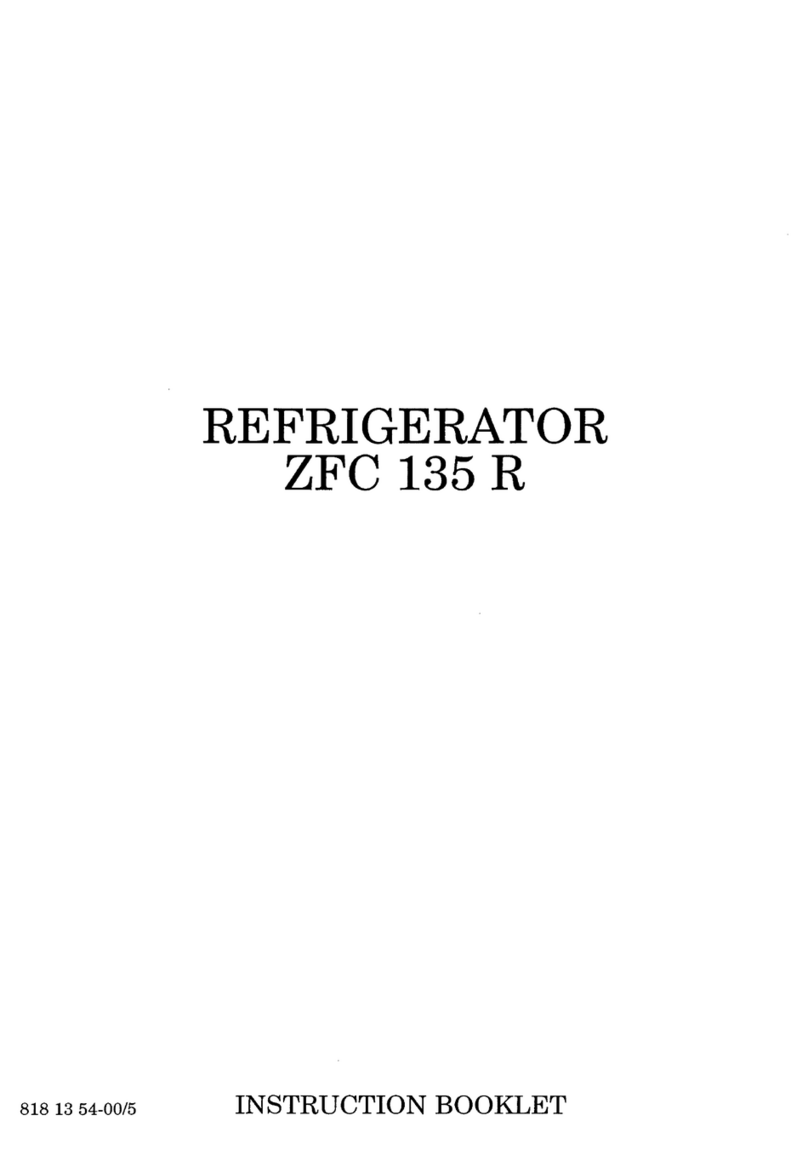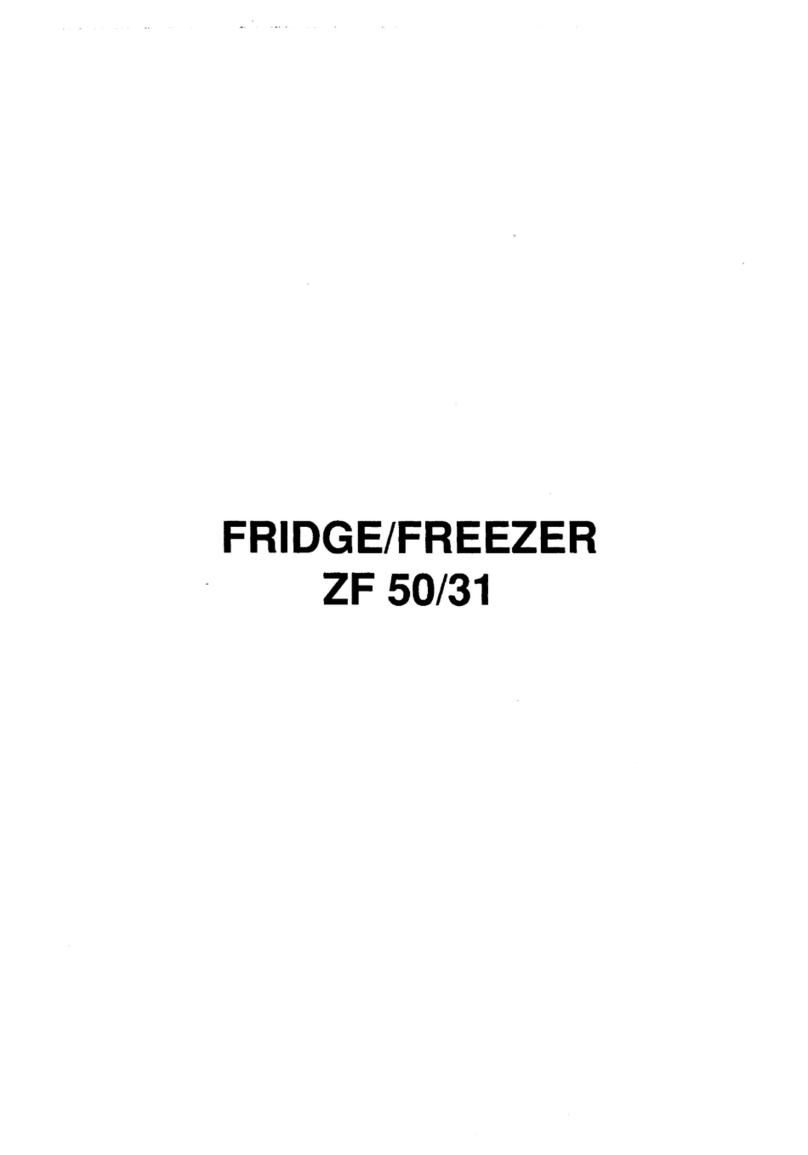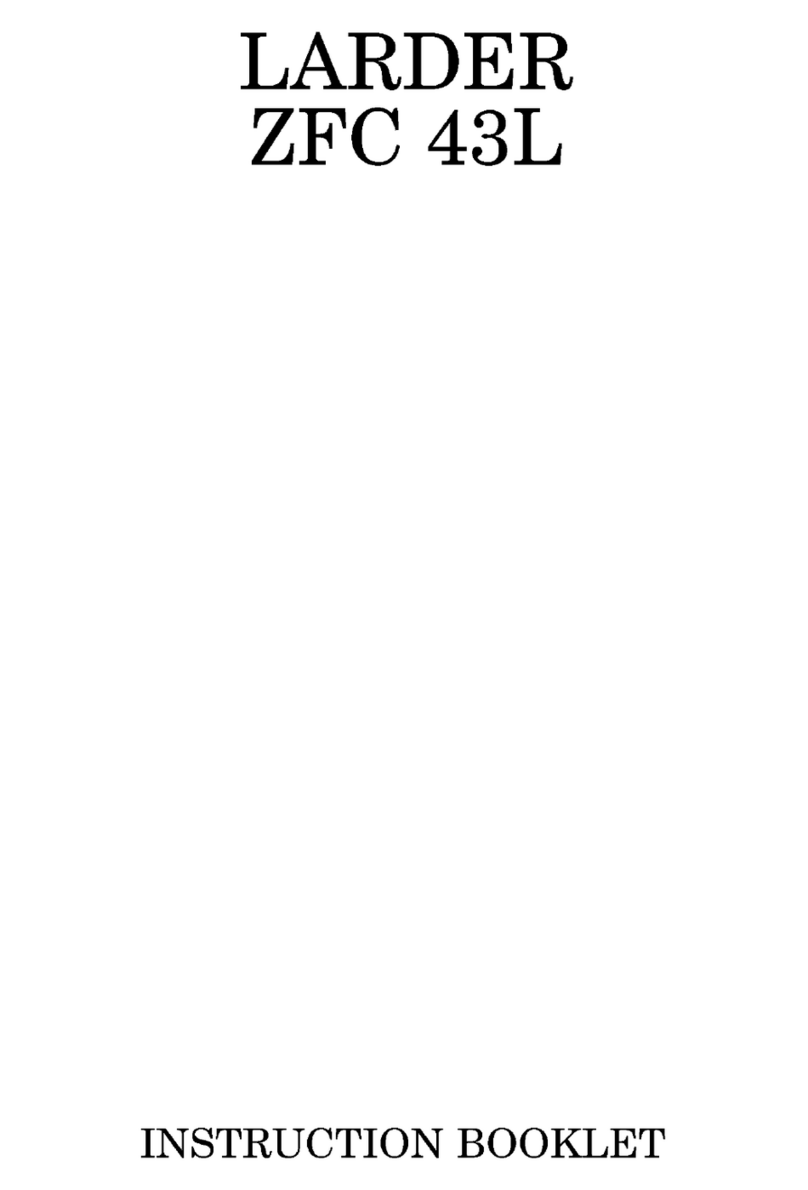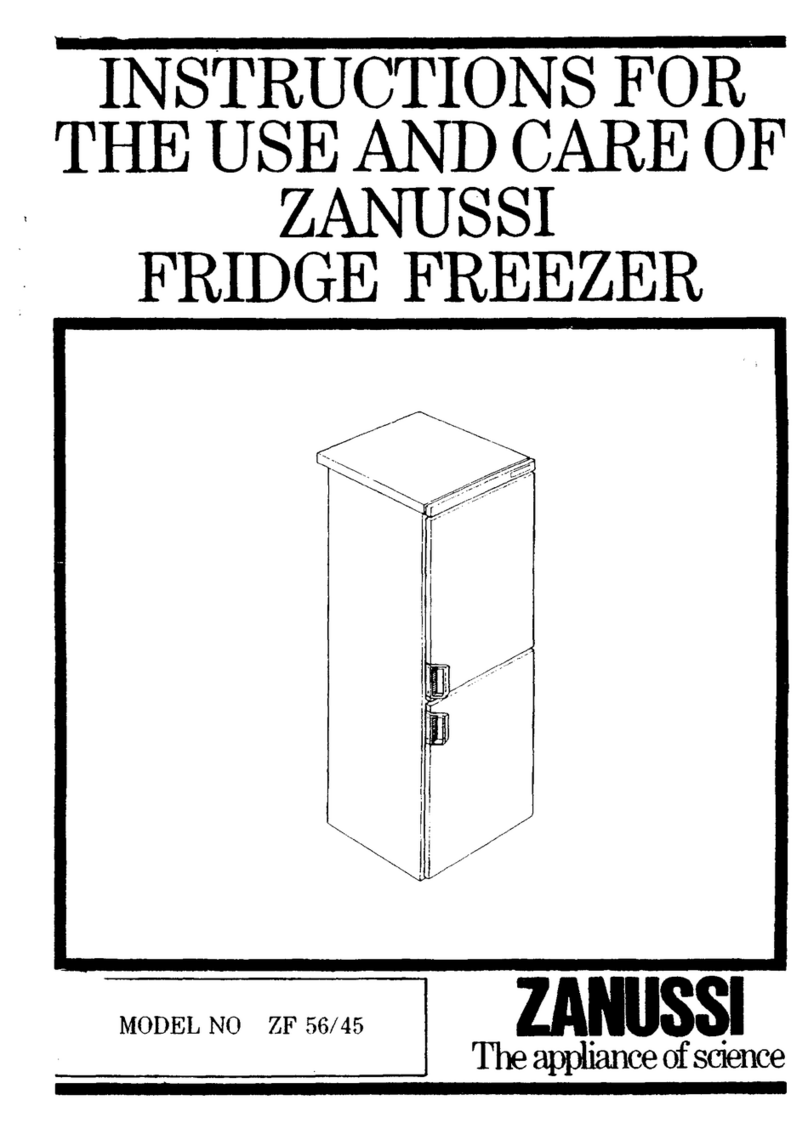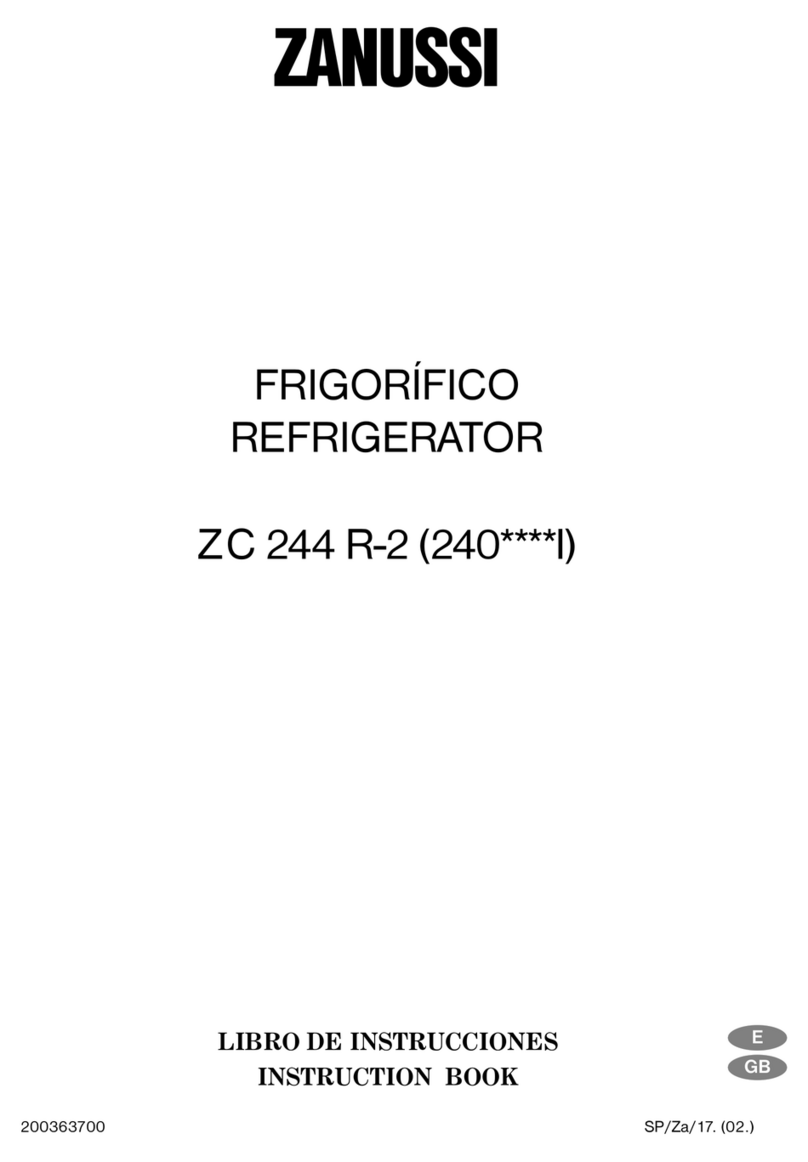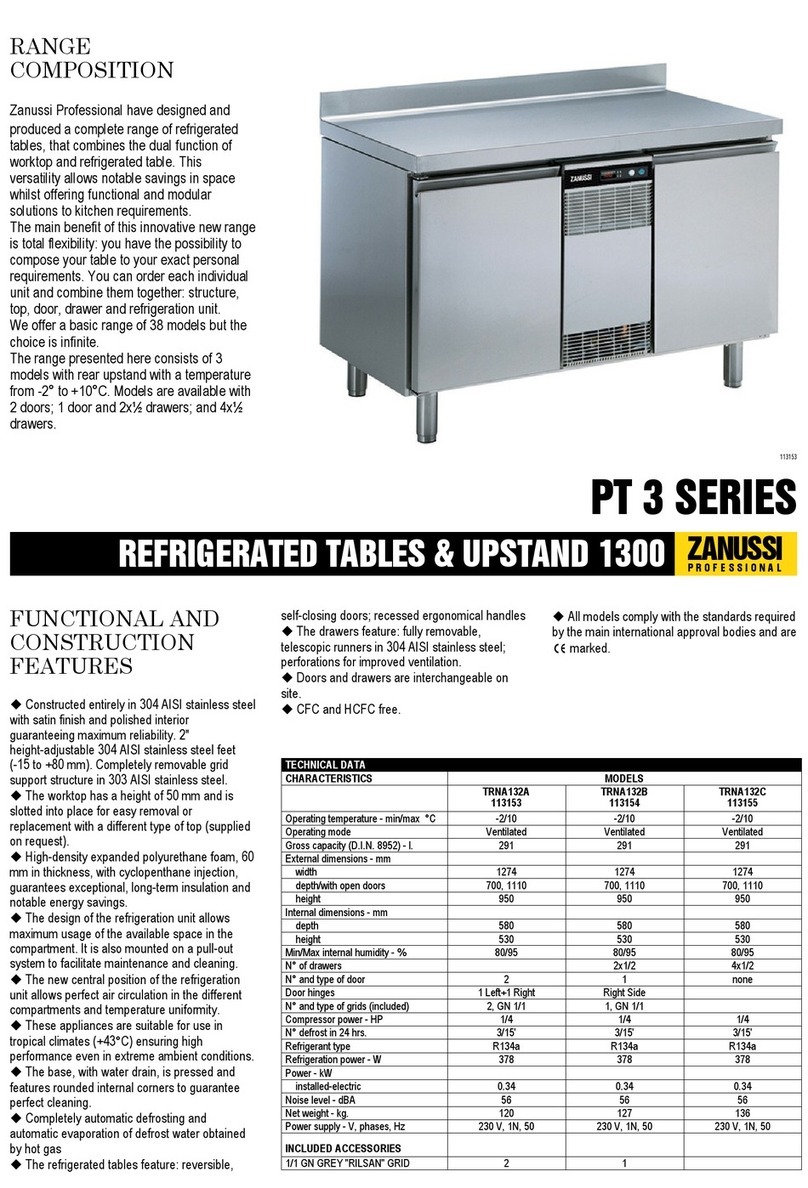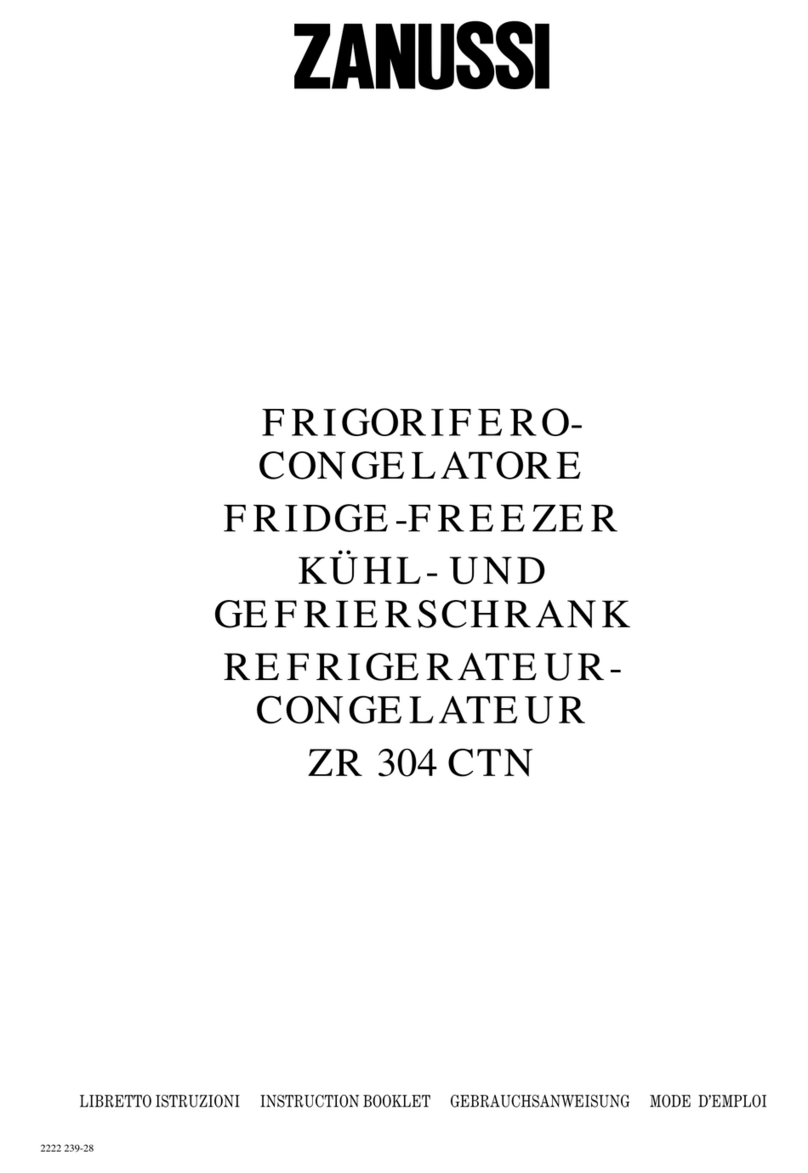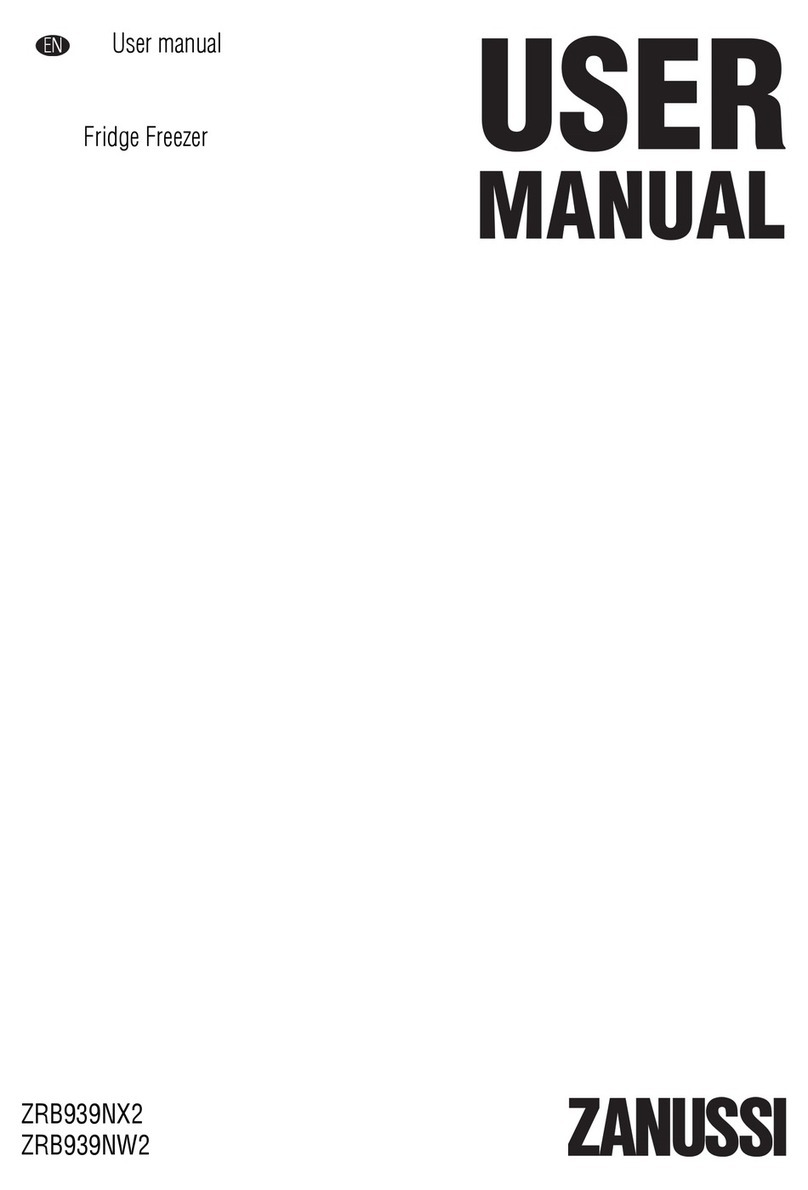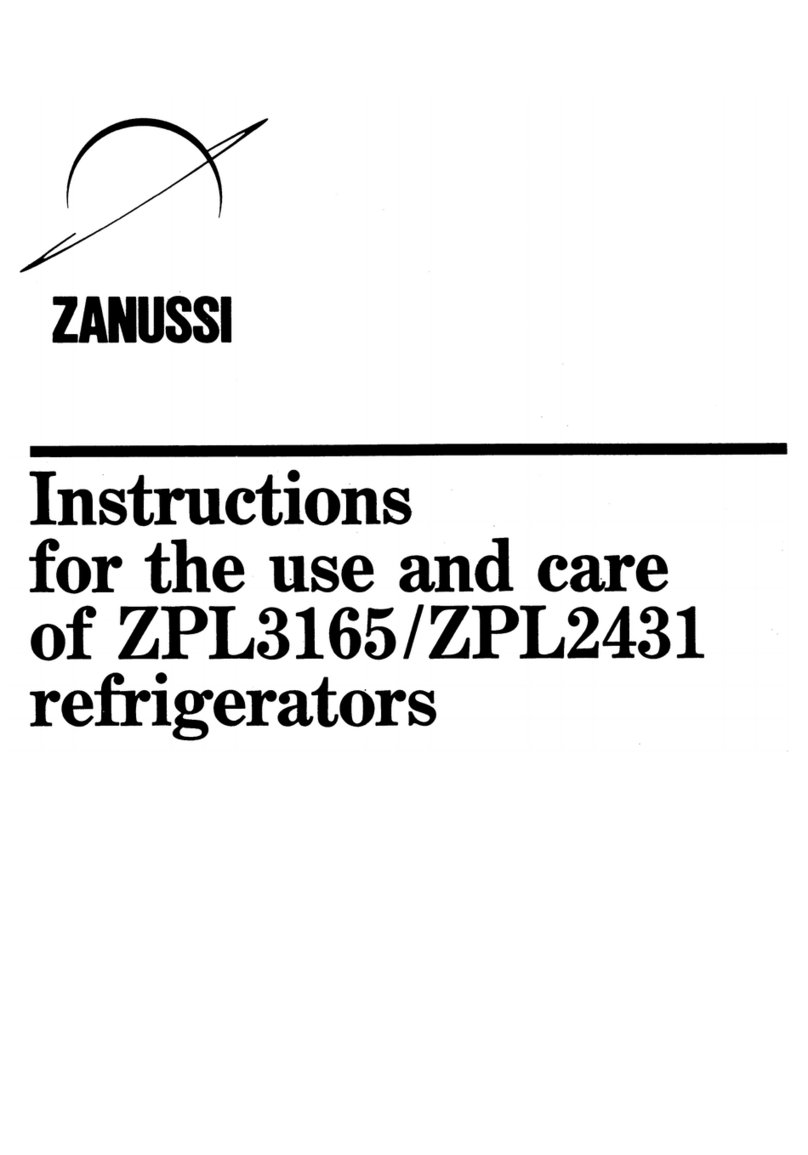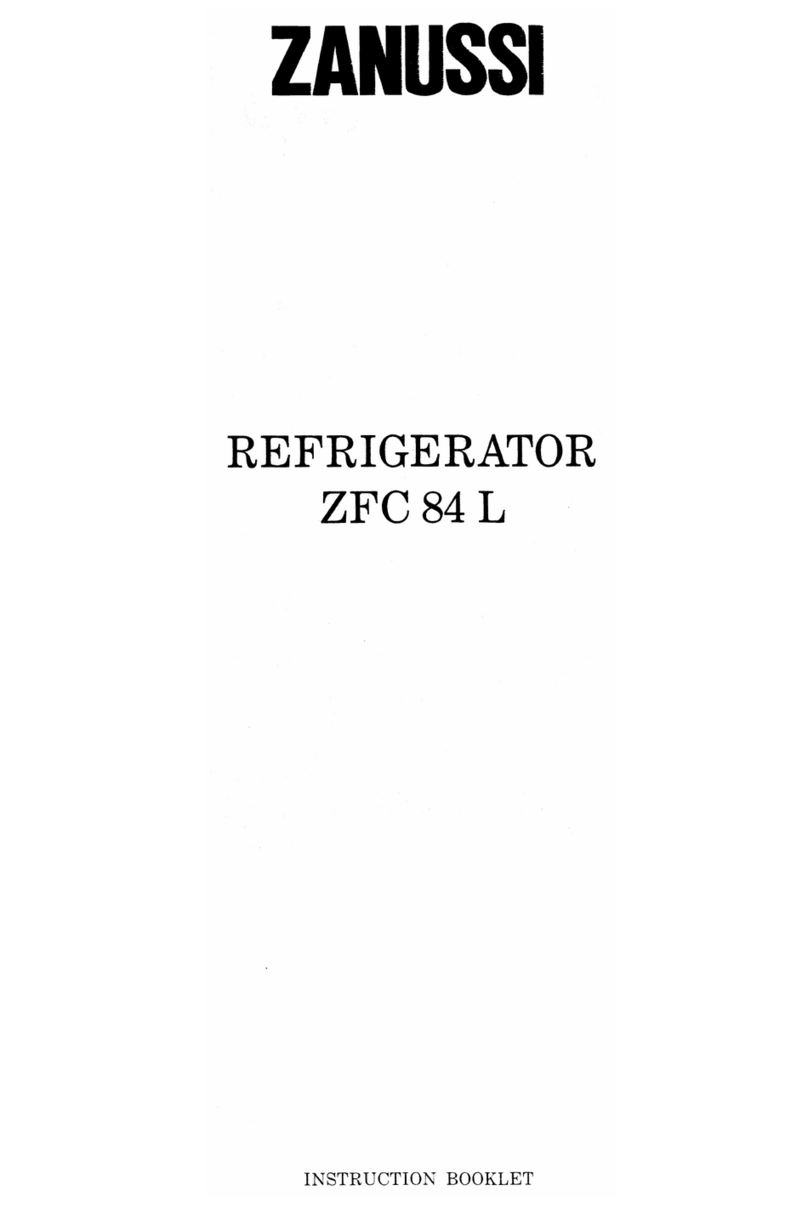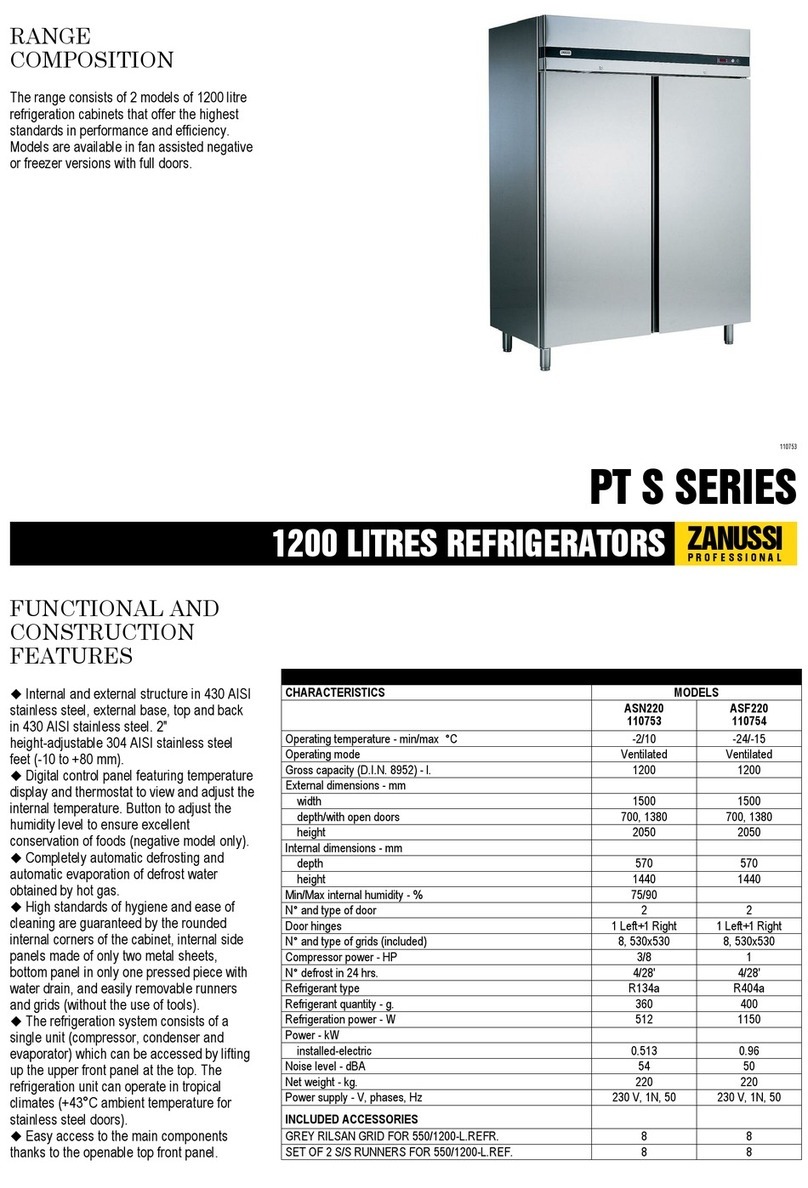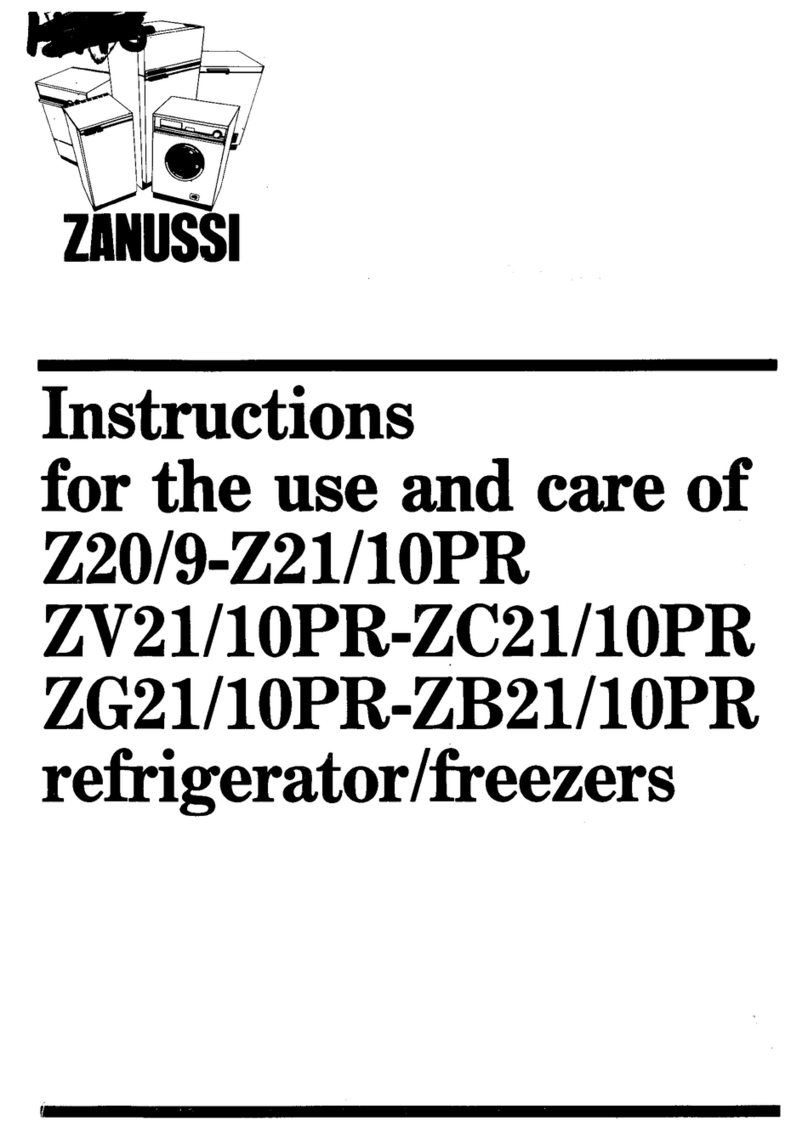7
HINTS AND TIPS
Normal Operating Sounds
• You may hear faint gurgling or u ling sounds
when the refrigerant is pumped through the coils
or tu ing at the rear, to the cooling
plate/evaporator.
• When the compressor is on, the refrigerant is
eing pumped round, and you will hear a whirring
sound or pulsating noise from the compressor.
• A thermostat controls the compressor, and you
will hear a faint ’click’ when the thermostat cuts in
and out.
Food Storage
To o tain the est performance from your fridge-
freezer
• Do not store warm food or evaporating liquids.
• Avoid uying frozen food if you cannot store it
straight away. The use of an insulated container is
advisa le. When you arrive home place the frozen
food in the freezer immediately.
• Keep the time etween uying chilled food and
placing it in your refrigerator as short as possi le.
• Do not push food together too much, try to allow
air to circulate around each item.
• Do not store food uncovered.
• Ensure that food placed in the freezer is dated
and la elled and used in date order to ensure
that food is consumed at its est.
• Remove suspect food from your refrigerator and
clean, refer to Maintenance and Cleaning.
• Lean food keeps etter and longer than fatty food,
salt reduces the storage time.
• Wrap the food in polythene or aluminium freezing
ags or foil so that they adhere to the food and
provide an airtight seal .
• Packaging which is swollen or has traces of
refrozen water droplets on the pack could indicate
that the product has not een kept at a suita le
temperature and that it may have lost its original
quality. Partially thawed food must not e
refrozen, it must e consumed within 24 hours.
Never exceed the storage times indicated y the
manufacturer.
• The sym ols on the drawers show different types
of frozen goods.
The num ers indicate storage times in months for
the appropriate types of frozen goods. Whether
the upper or lower value of the indicated storage
time is valid depends on the quality of the foods
and pre-treating efore freezing.
Energy Saving Advice
• Do not install the appliance close to sources of
heat, such as a oiler or radiator.
• Locate the appliance in a cool well ventilated
room and make sure that the air openings of the
appliance are not o structed.
• Avoid unnecessary frosting in the ca inet y
packing all foodstuffs into airtight packages
efore placing them in the freezer.
• Always leave warm food to cool down to room
temperature efore placing in the fridge.
• Food which is to e frozen (when cool) should e
placed in the fridge efore eing transferred to
the freezer.
• Thaw frozen food in the fridge. This will ensure
safer defrosting of foods and reduce the work of
the refrigeration unit.
• Try to avoid keeping the door open for long
periods or opening the door too frequently as
warm air will enter the ca inet and cause the
compressor to switch on unnecessarily often.
• Ensure there are no o structions preventing the
door from closing properly.
In the Event o a Power Failure
If there is a power failure during the storage of frozen
foods, keep the door closed. If the temperature within
your freezer should rise, do not refreeze the food
without checking its condition. The following
guidelines should assist you:
Ice-cream: Once thawed should e discarded.
Fruits & Vegetables: If soft should e cooked and
used up.
Breads & Cakes: Can e refrozen without danger.
Shell ish: Should e refrigerated and used up
quickly.
Cooked Dishes: i. e. casseroles should e
refrigerated and used up.
Large Pieces o Meat: Can e refrozen providing
there are still ice crystals remaining within them.
Small Joints: Should e cooked and can then e
refrozen as cooked dishes.
Chicken: Should also e cooked and refrozen as a
fresh dish.
14
INSTALLATION
Positioning
This appliance should only e installed at a location
where the am ient temperature corresponds to the
climate classification indicated on the rating plate, which
is located at the left on the inside of the appliance.
The following ta le shows which am ient temperature is
correct for each climate classification:
SN +10°C to + 32°C
N +16°C to + 32°C
ST +18°C to + 38°C
T +18°C to + 43°C
It should e located in a dry atmosphere, out of direct
sunlight and away from extreme temperature e.g. not
next to a oiler or radiator, or in a very cold room e.g. an
outhouse, where the temperatures may fall elow 10°C
(50°F). If these temperatures are exceeded i.e. colder or
warmer, then the appliance may not operate correctly.
You should also ensure that air can circulate freely
around the ack and the top of the ca inet. There must
also e at least 100 mm (4”) distance etween the top of
the ca inet and any overhanging kitchen furniture (A).
Ideally, the appliance should not e positioned eneath
overhanging furniture (B).
There should also e a gap of 25 mm either side of the
appliance. Do not o struct the space underneath. The
ack of the ca inet may e placed close to the wall ut
must not touch it. DO NOT install in places with
restricted ventilation.
Adjust the level of the appliance y screwing out the
adjusta le foot, or feet, at the ottom of the ca inet
using your fingers or a tool ( see figure) .
